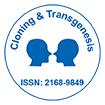
क्लोनिंग एवं ट्रांसजेनेसिस
खुला एक्सेस
आईएसएसएन: 2168-9849

आईएसएसएन: 2168-9849
Kalyan Nadiminti, Fenghuang Zhan and Guido Tricot
Multiple myeloma constitutes about 1% of all malignancies. It has complex cytogenetic and heterogeneous clinical presentations. Recent advances in molecular diagnostic methods have shed light into the chromosomal and molecular changes underlying the pathogenesis of plasma cell dyscrasias, such as Monoclonal Gammopathy of Unknown Significance (MGUS), Smoldering Myeloma (SMM), Multiple Myeloma (MM), and plasma cell leukemia. It is now well established that majority of hypodiploid and hypotetraploid karyotypes, otherwise known as non-hypodiploid karyotypes, harbor chromosomal changes that are considered high risk and have an aggressive disease course. The hyperdiploid category consists of trisomies of uneven chromosomes, and majority of the patients have a good prognosis, although a minority of patients have aggressive disease with up-regulation of proliferative genes. Risk stratification with gene expressions profiling and aCGH studies have helped classify patients into high risk, intermediate risk and good risk categories which are helpful in guiding therapy. While t(4;14) and del(17p) are considered to be the most deleterious cytogenetic abnormalities, del(13) by FISH analysis is considered an intermediate risk and t(11;14) is considered as a good risk marker. The worst outcomes are observed in the high risk category, and even the most intensive treatments cannot fully overcome the negative impact of genetic findings. Although some novel agents are showing promise in changing the outcomes of t(4;14), del(17p) remains a challenging disease. While many targeted therapies are under development, more work needs to be done in establishing and integrating routine testing of these cytogenetic markers into clinical practice to individualize treatment although within specific genetic subgroups there remains a high degree of variability in outcome determined by other factors, mainly the extent of the disease.